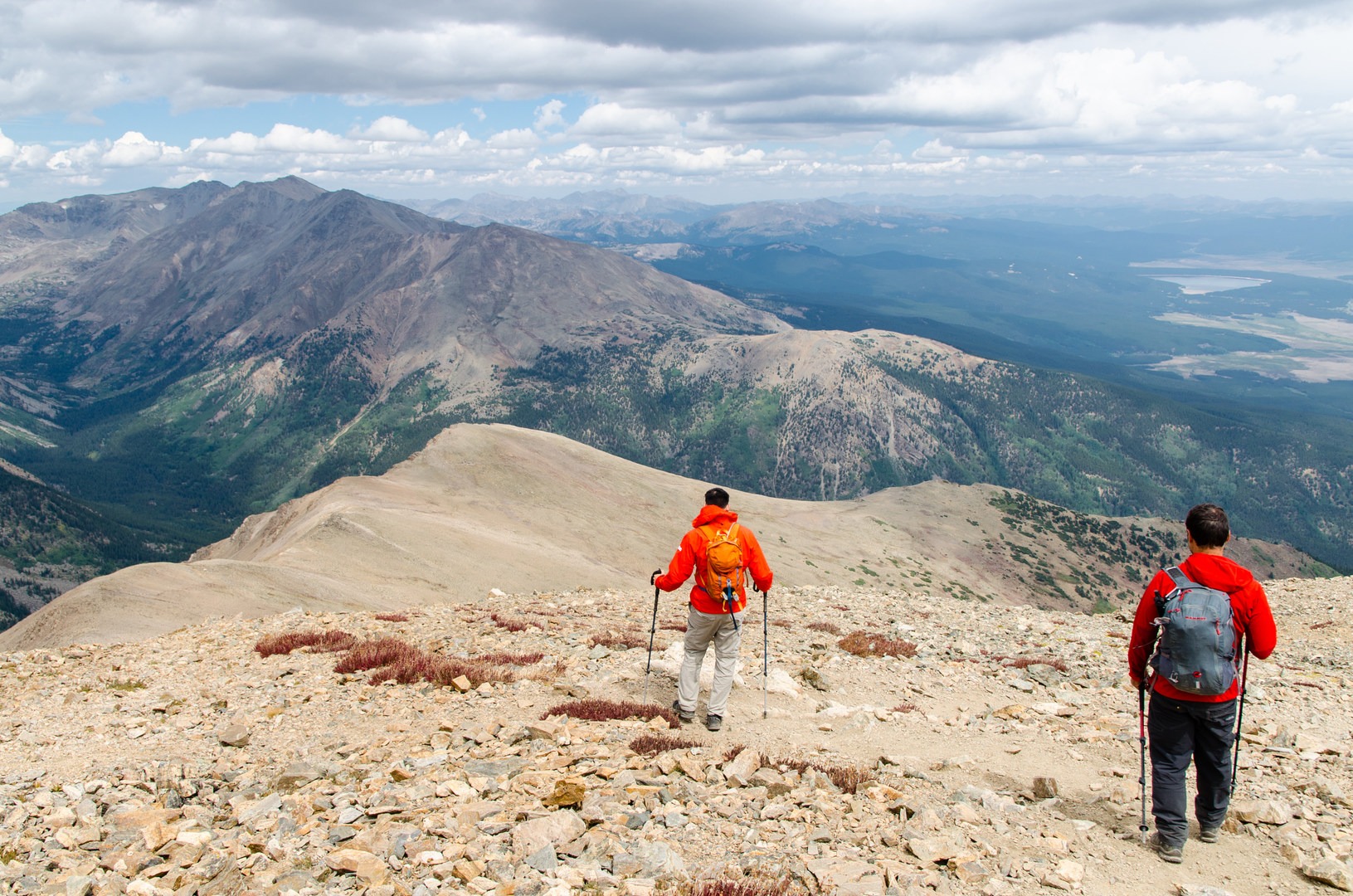Mount Elbert is the highest point in the state of Colorado, and the northeast face is the shortest trail to the top. The easy way up will allow you to take your time to make up for the thin air and enjoy the views longer.
The trailhead is at Elbert Creek Campground. If you plan on camping there, bring cash to pay the campground administrators and get there early or during the week as it gets crowded during weekends.
The first part of this hike is on a nice and wide trail in the forest. After 1 mile, you will reach the junction with the Colorado Trail. Turn right (or southwest). At this point, the grade will ease temporarily, but the climbing will soon start again. Ascend gently but steadily for another 1.7 miles until you reach tree line (about 11,900 feet).
The views start here and will not stop until you re-enter the forest on the way back. You might think you see Mount Elbert up ahead, but it’s actually a false summit. Don’t despair: the true summit is not far!
Until tree line, the trail is easy on a flattened surface. From then on, it traverses a field of rocks and boulders. It is also steeper. Keep going toward what seems like the summit. That section culminates just before 13,900 feet with the false summit.
The terrain flattens significantly at this point, making it a popular resting spot. The summit still can’t be seen, but it is barely a half-mile away on an easy trail with a gentle grade. On the way up, look north toward Mount Massive. It is the second highest peak in the state and the one that has the most area above 14,000 feet, hence its name.
Finally, after 4.75 miles of hiking and 4,700 feet of elevation, the summit is reached. As it’s the state high point and is relatively easy to access, the top can feel like a sunny afternoon in downtown Denver. The summit is big, however, and it is possible to find a quiet place to have a bite. The other highest peaks of Colorado lie to the north and the south.
Descend by the same trail used for the ascent.
Note: The 14,000-foot peaks of Colorado are attractive because of their high elevation, but remember you must take extra precautions if you hike that high. Weather can change fast, winds can be destabilizing, some people can experience altitude sickness, and thunderstorms in the afternoon are a common occurrence. Make sure to check the weather before going and get an early start. Having a turnaround time is also a good idea.


























Comments
Sign In and share them.